Edo Pop: The Graphic Impact of Japanese Prints
Graffiti, pinups and pop art mingle with ukiyo-e prints in a dazzling exhibition
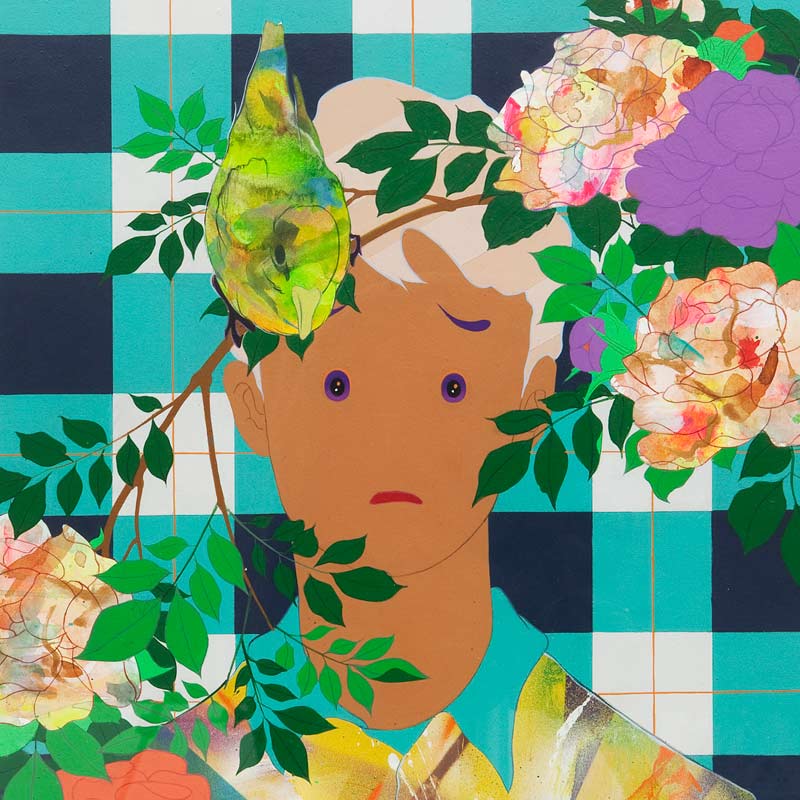
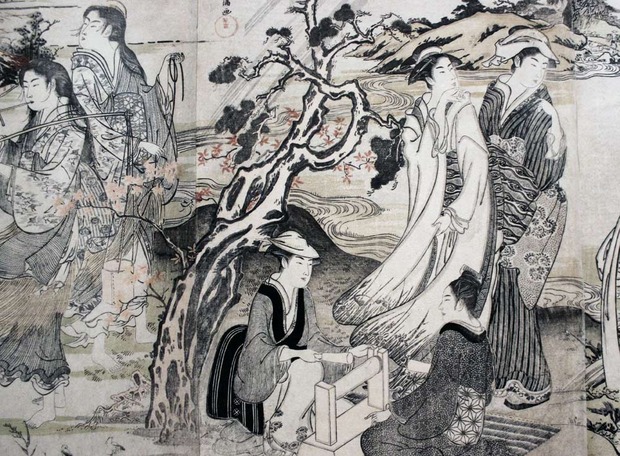
As the recently appointed director of NYC’s Japan Society Gallery, Miwako Tezuka makes a resounding statement about the modern relevance of traditional Edo-era art. While introducing “Edo Pop: The Graphic Impact of Japanese Prints,” Dr. Tezuka hones in on “a contemporary sensibility,” the notion that artists across generations can speak to each other through their connection to the everyday. The modern-day talent that accompanies the historic artworks is a diverse crew of graphic-minded individuals that each utilize woodblock themes, techniques and attitudes.
Fittingly, the rise of ukiyo-e—the central genre of woodblock printing, which Dr. Tezuka translates as “everyday picture”—reflected a socio-economic movement toward a more democratic art form. Hand-picked by Dr. Tezuka, the contemporary artists are similarly influenced by “low brow” forms like graffiti, pinups and pop art posters. Unlike the standing Edo Pop exhibition at Minneapolis Institute of Arts, Tezuka’s curation involves a tight-knit connection between new and old, hanging masters like Hokusai next to upstart talent and established artists.
Selected from the wide-ranging exhibition, we’ve gathered below a few highlights from the contemporary pool.

Lady Aiko
The tone of the exhibition is set from the start with a stenciled graffiti installation by Lady Aiko, a Japanese-born street artist who currently resides in Brooklyn. The mural breathes life into the sterile gallery with an image centered around a woman with a back tattoo sitting in the shadow of a wave. Aiko welcomed the opportunity to be part of Japan Society’s exhibition, saying, “When they asked me to be part of Edo Pop, I thought, “I’m already Edo Pop—I’m already doing ukiyo-e.”
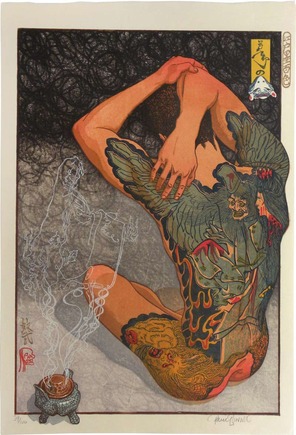

Paul Binnie
Following Aiko’s mural, the show is divided into four thematic stages—beauty, actors, joy of life and landscapes. The first section presents the bijinga (literally, “beautiful lady photos”) of the monumental figure Kitagawa Utamaro, who is known for bringing expression and dynamism to classic geisha portraiture. Paul Binnie, a Scottish painter who turned to traditional wood-block prints, makes an unlikely pairing for Utamaro. Binnie expands the bijinga legacy by depicting male nudes and heightening the color range.
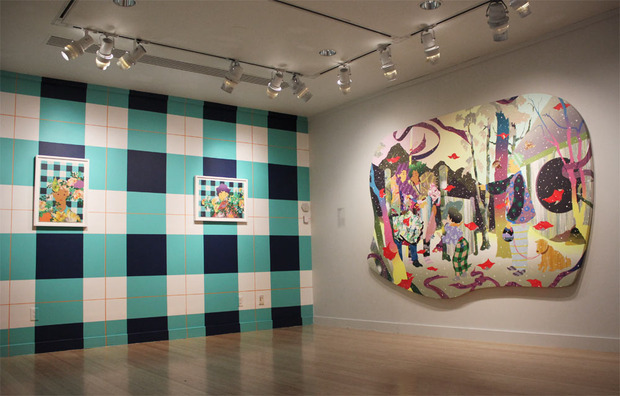
Tomokazu Matsuyama
Tomokazu Matsuyama—whose studio we visited in advance of the exhibition—was another standout talent. His mishmash of manga, ukiyo-e and fashion influences make for superbly colorful fantasy lands. In his corner the artist’s signature bright gingham check coats the wall behind his work, nodding to the importance of textiles in Edo-period prints.
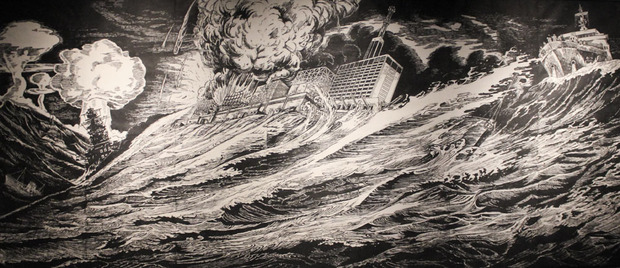
Sachiko Kazama
Hokusai’s “The Great Wave” was the starting point for the landscape section, which featured several promising young artists. Sachiko Kazama installed the massive woodblock print “Alas! Heisoku-kan” (2012)—part of a series of three that she made following the 2011 Tōhoku earthquake—showcasing a storm surge on an urban landscape.


Emily Allchurch
Riffing off of Hiroshige’s famous series “100 Famous Views of Edo,” Emily Allchurch displayed light box works depicting contemporary equivalents of Hiroshige’s Tokyo vistas. In the collection, high-rises and adverts disrupt the otherwise serene landscapes.
Ishii Tōru
“Tokyo Tower” by Ishii Tōru riffs off landscapes of Mount Fuji, showing a pile of businessmen with faces painted in kabuki style. The hilarious commentary on corporate hierarchy is relevant down to the last detail, with yen signs replacing the eyes of the salarymen.
Edo Pop opens at Japan Society 9 March 2013 and will run through 9 June 2013
Installation, “Alas! Heisoku-kan,” “Six Jewel Rivers” and “Tokyo Tower” photography by James Thorne; All other images courtesy of Japan Society












